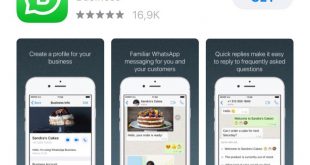
Some weeks ago we talked about Search Engine Optimization (SEO) in An Entrepreneur Blog. Today we talk of what can be referred as SEO’s counterpart, which is Online Advertisement. I say it is the counterpart, because for SEO you don’t pay the search engine, such as Google, but for online ads you have to pay.
Many times online advertisement is called SEM, for Search Engine Marketing. However not all online advertisement is done through search engines. For example, you can have online ads in platforms such as Facebook and Twitter or in other places, like Blogs and news outlets. Clarifying this subject, I have to state that many people don’t make this distinction and in general refer to online advertisement as SEM. It is important to note that you can advertise through Google’s ad engine, called Adwords, in their search engine, other Google products (such as Gmail) and in a huge network of external websites owned by others (such as this Blog).
Going beyond these technical terms, as sponsors we have to learn how online advertisement will be profitable for us. And this can be quite complex as there are many elements to take into account. Let’s see and analyze some of these elements.
The first thing to notice is that our online strategy can have a mixture of both SEM and SEO. Maybe we have several phrases that are ranked high in Google for free, so for the time being we don’t have to pay for these phrases. However there might be other phrases or keywords that are not ranked well, so here it might be intelligent to pay for ads. Be very careful with this strategy, as these keywords and their ranking are dynamic. Evaluate ranking every month or so and make changes accordingly.
A second element to analyze is where we want to have ad presence. This can be online an/or offline. We have to choose those mediums where it makes sense and where we have learned we receive the highest returns.
Third, define the message you’re going to use for the ads. What are the elements you want to transmit to the users? Also, how are you going to provide more information after the user clicks the ad or access your website? This is called the landing page and depending on how well or bad it is designed, the results will be the same.
And finally, what are we going to do with the user one he clicks the ad? It is unlikely that the user will buy our product or service immediately after seeing our website. We have to follow him and try to convince him about our product. For example, there is a technology called retargeting that “follows” users that have entered a website for some time, showing him more ads that are related to this website.
This is just an introduction to this quite complex subject. I hope you learn form this and make the best out of your online ad budget.
Image taken from Flickr.com
 An Entrepreneur Blog Management, Strategy, Internet, Technology, Social Networks, Organizational Change and more!
An Entrepreneur Blog Management, Strategy, Internet, Technology, Social Networks, Organizational Change and more!



